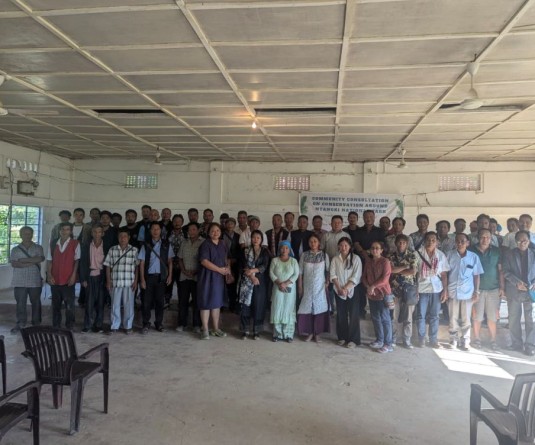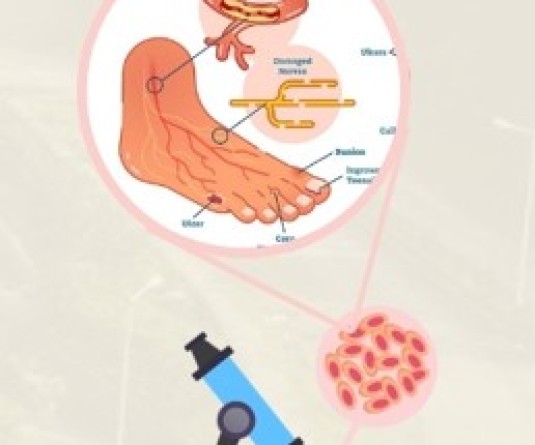A Naga woman pounding rice outside her home in Kengjung village under Tuensang district. (Morung Photo)
‘Mechanism needs to be created to increase women representation in politics by 2030’
Our Correspondent
Kohima | August 23
Nagaland Sustainable Development Goals (SDGs) Vision 2030 in its Goal-5 on ‘Gender Equality’ aims to achieve gender equality and empower all women and girls. The vision is to improve the socio-economic status of women as well as provide support services to the mainstream and balance the gender divide, uplift women and facilitate their self dependency.
The vision statement stated that along with enabling and encouraging women to develop their skills, marketplaces which are gender balanced and gender responsive will help uplift women and allow a greater reach of their products and service.
MYKI Bazaars in all districts
The Department of Women Resource Development (WRD) intends to set up MYKI Bazaars in all the districts of Nagaland in different phases. MYKI Bazaars are proposed to be located at all the centres of the cluster of villages under one block or block level where feasibility is high.
To make MYKI bazaars functional, it said that identification of existing/abandoned marketing shed constructed by any other agency/department in the proposed area will be done at the infrastructure level. This will be followed by initiation of a Memorandum of Understanding (MoU) with the concerned agency/department and repair and renovations of the marketing shed.
At the operational level, identification and sensitization of existing self-help groups (SHGs), societies or NGOs in the proposed area/block and injection of essential seed money into the SHGs would be initiated.
It also said that the government would continue to organize MYKI Fest annually with more inclusiveness and coverage. Started in 2018, MYKI Fest is an annual event to celebrate the activities and achievements of women entrepreneurs, artisans, artists, cultivators and SHGs.
It aims to showcase their achievements, products and activities, explore more market linkages within and outside the state, interaction and exchange of ideas and concepts amongst the entrepreneurs, facilitate enterprise to enterprise cooperation and help women entrepreneurs get greater exposure to regional and other business environments and opportunities.
By 2030, it is expected that around 15,000 school dropout girls, young women, women farmers and entrepreneurs would have already availed or benefitted from the programme.
As part of the Government of India’s ‘Digital India’ initiative, the WRD department also proposed to launch a direct online marketing platform called MYKI e-Bazaar to support women entrepreneurs, artisans, cultivators, SHGs and NGOs particularly those who have innovative products but are not internet or computer savvy.
The department of social welfare is focusing on ‘Mission Effloresce’ for empowerment of rural women by development of skills and entrepreneurs to enhance productivity, it added.
One stop centre for women
The vision statement stated that ‘One stop centre for women’ established in all the districts will contribute to the overall safety and security of women in the state.
Special calls to tackle domestic violence cases will be established and awareness-building efforts will be made. The Women Helpline 181 will be integrated to support victims of violence, both mental and physical, it said.
Gender responsiveness
In order to have gender responsiveness and allow for women upliftment, the state machinery aims to incorporate various steps.
Regarding sensitive governance, the vision statement stated that the process of governance must be inclusive and participatory.
“Gender sensitive governance requires that policies and legislation should address that differing needs, interests, priorities and responsibilities of women and men. Equal opportunities should be extended to both men and women for employment, leadership and decision making at all levels. All citizens must enjoy equal access to quality education, economic resources and political participation by 2025,” it stated.
Gender responsive budgeting is a necessary area of intervention for securing strategic gender interests through analysis, allocation of resources and assessment of impact basic the needs of both women and women.
The vision statement stated that gender responsive infrastructure interventions can reduce women’s time cost and increase mobility and safety.
“This increases women’s productivity which makes society more productive. Recognition of gender- differentiated needs is necessary while designing new development projects and gender sensitive infrastructure should be included in all planning,” it stated.
Stating that capacity building programmes and social welfare/livelihood schemes shall have equal participation of both men and women, it stated that gender disaggregated data should therefore be made compulsory for all schemes to ascertain the composition of the programme.
Participation in policy making
The vision statement stated that having gender sensitive policies and encouraging women participation in policy making is a key step towards ensuring a gender balanced state and underscored that formulation of Nagaland State Policy for Women with comprehensive guiding framework is necessary.
“This will lead to advancement, development and empowerment of women keeping in mind the unique socio-cultural context of the state,” it stated.
Stating that Nagaland has not had a single women representative elected to the Nagaland Legislative Assembly since statehood, it added that only 15 women candidates have contested so far since 1964 compared to the 2,071 male candidates.
“Considering that Nagaland has amongst the best male-female population ratios in the country, this statistic is highly skewed and unhealthy. Women represent half of the state’s population and their participation in policy making is a must. Therefore, a mechanism needs to be created to increase women representation in politics by 2030,” it stated.
Village Development Board
The VDB rules stipulate a 25 percent quota for women in the VDB. Although this is an Act of the government and does not infringe on the traditional or customary laws, in many villages, women are not represented adequately, it said.
In this context, the VDB rules may be amended to make provision for appointment of women VDB secretaries on a rotational basis alternating the tenure between men and women, it added.
Further, the 25 percent sub-allocation for women under the VDB fund may be channelized through the nodal department to ensure it full and effective utilization.
Asset ownership
The vision statement stated that economic empowerment of women raises the status of women both economically and socially.
“Yet, customary laws on inheritance create gender disparity in the ownership of assets limiting women from using land as input for production or for use as collateral for credit. To ease such constraints, land title certificates in the names of both the husband and wife should be encouraged by modifying the clauses in the land registration laws. To incentivize registration of property in the name of women, rebate/concession on stamp duties should be granted on registration of land and assets in their name,” it stated.
Equal wages
Equal pay for work of equal value ensures inclusive growth. However, disparity in wages between men and women based on stereotypes about women’s roles is not uncommon, it stated.
In Nagaland’s agriculture sector where women constitute majority of the labour force, wage disparity exists, it stated while asserting that it is “crucial to address gender bias in wage structure by 2030 with sustained efforts at the level of policy making taking a cue from MGNREGA scheme.”
FOCUS for Tomorrow
• Socio-economic empowerment of women through livelihood activities
• Formulate Nagaland State Policy for Women
• Increase women representation in policy making
• Facilitate gender responsiveness.
2030 targets on ‘Gender Equality’
• Establish Women Resource Centres in all the districts of Nagaland by 2030
• 3,500 women farmers to be benefitted for sustainable livelihood activities under Resource Development programme for Women
• Train at least 1,000 young women and school drop outs for self- employment under Multi Training Centre
• Train more than 1, 500 school drop girls and young women to promote entrepreneurship and self employment under Integrated Development Cum Resource Centre (IDRC)
• Train 2,000 women in various short term vocational courses and skill development under Women Resource Centre.





